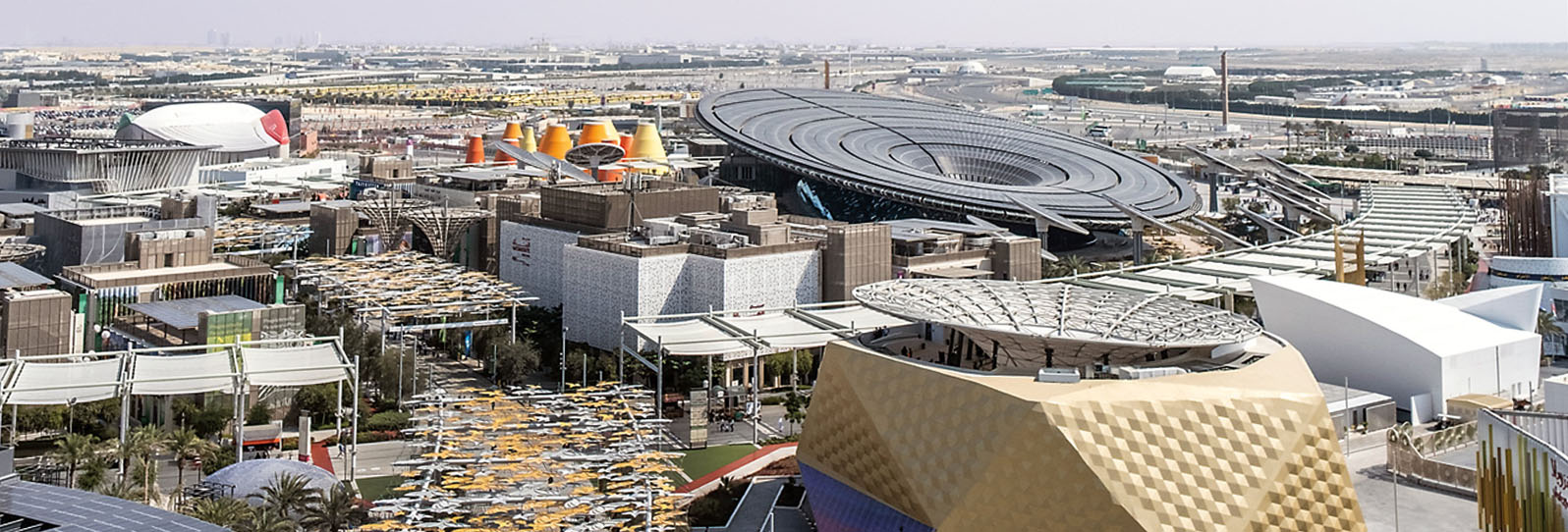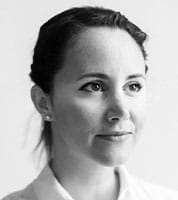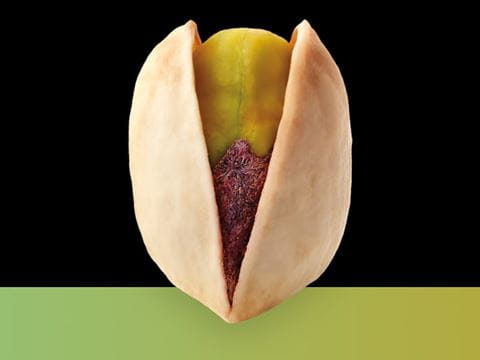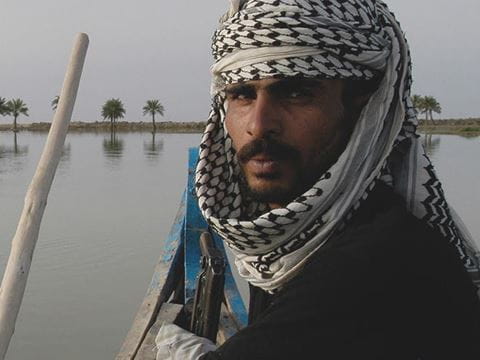
World Expo Designates Dubai as Hub of Sustainability and Innovation
Expo 2020 Dubai closed in March after showcasing buildings and displays designed to maximize sustainability, one of the Expo’s top themes. Creative systems for power generation, water conservation and city planning all addressed global challenges.
From the 1851 Crystal Palace in London to the 1889 Eiffel Tower in Paris and the 1893 introduction of the Ferris Wheel in Chicago, world’s fairs have stimulated progressive building ideas.


They have also introduced inventions that have gone on to change the world: the telephone, the television, the touchscreen. Beyond the monuments and technology, thoughtful observers see in this string of innovations the aspirations of each age. Amid what can seem like extravagant carnivals, world’s fairs also offer a civilizational compass.
In 2013 the Paris-based Bureau International des Expositions, the body charged with certification of World Expo designations, looked for a host city along the great arc stretching across Africa and the Arabian Peninsula to South and Southeast Asia, where our century’s greatest growth of human populations will occur. Near its geographical center lies the largest city in the United Arab Emirates (UAE), Dubai, with a population currently a bit under 3.5 million and growing.
Delayed a year by the global coronavirus pandemic, Expo 2020 Dubai opened its six-month run last fall and closed March 31.
The Expo’s three themes of Sustainability, Mobility and Opportunity each expressed a widely shared yearning for the future. It was fitting to put sustainability at the head of the list, for the other two depend upon it. As a result, the centerpiece of the expo’s numerous sustainability-themed exhibits and buildings became Terra—the Sustainability Pavilion, an architecturally eloquent expression of desire to hold human growth and technology in a better balance with natural forces.
Whatever Expo 2020 Dubai was to say about our common future, it was likely going to be here, where technologies directly addressed critical elements of materials, energy, water and food with ideas designed to serve burgeoning cities.
A new course for Dubai
When Dubai received its award of the World Expo, it did so as the first city to host such an event in the Middle East, Africa or South Asia. Dubai’s leaders then pledged to make it the most sustainable one ever, and to do so by using the occasion to create the nucleus of a new permanent district designed to set a new course for the sprawling desert metropolis. It would be planned meticulously with devotion to conservation and low-carbon impacts.
Ambitious goals for energy use, water and waste recycling were set. Protocols for monitoring, reporting and adjusting in light of emerging data were put in place. Design and construction took seven years.

As a result, some 80 percent of the expo’s more than 120 permanent buildings earned Gold status from the US Green Building Council’s Leadership in Energy and Environmental Design (LEED). Seven signature pavilions, including stunning structures by Saudi Arabia and the UAE, received the highest LEED certification of Platinum. Similarly, the international Civil Engineering Environmental Quality Assessment and Award Scheme (CEEQUAL) conferred an Excellent certification on the Expo site as a whole.
A record 192 countries participated. While most were housed in buildings erected by the Expo, many others built custom structures. This required each national planning team to submit plans for construction, operation and dismantling that adhered to demanding environmental standards for all aspects of materials, energy, water, recycling and more.
As one result, photovoltaic solar panels on the roofs of all of the Expo’s permanent buildings—some 120 buildings were LEED-certified for the event and will remain in operation as part of District 2020, Dubai’s newly-named smart city—created enough power to meet a laudable 30 percent of the event’s energy requirements. For water, all buildings were required to exceed Dubai’s standard building regulations for efficiency, which stimulated creative planning for water capture and reuse throughout the Expo.
Much as expected, the results were not universally successful—and planners say that’s not really the point when experimenting ambitiously. Full self-sufficiency in energy and water remained elusive. Novel projects such as hydrogen-powered busses to transport visitors were not implemented. Constraints of cost and time caused some ideas to fall away.


Yet Expo’s considerable successes showed a serious effort in the context of a city globally rated as one of the world’s least sustainable—and now advancing its own Clean Energy Strategy that aims to generate 75 percent of its energy from non-carbon sources by 2050.
“Expo is not a finished project,” says Dina Storey, head of sustainability operations for Expo Dubai 2020. “It is a pilot project.”
Born and raised in Iraq, Storey is a chemical engineer and a graduate of Columbia University in New York. It was she who led the planners who labored for five years to implement, monitor and report on Expo’s sustainability. On a site that a decade ago was open desert, she points out, they strove to create something not for only six months but also to last and be further developed for far longer. As such the legacy might lie less in buildings than in the ideas the entire expo process incubated.
Sunshine + Water = Inspiration
Terra—the Sustainability Pavilion, named from the Latin word for earth and anchor of the Sustainability District, was designed around a simple idea: Use sustainably sourced materials and, with them, produce energy and water equal to consumption.
Designed by UK-based Grimshaw Architects, Terra’s dramatic, kinetically elongated oval canopy, completely covered with ultraefficient, monocrystalline photovoltaic cells embedded in 1,055 glass panels, appears to float above the building. Its 30-degree slant orients it to the sun and optimizes water collection. At the center of the roof’s elegant, 130-meter length, the solar panels fall away gracefully to a hurricane-eye that drops, open to a courtyard below, creating a natural thermal chimney that expels heat.
The canopy’s angle is also set to maximize prevailing breezes, and under it, the solar panels are semitransparent, which creates a comfortable, shaded courtyard that is naturally cooler than outside by 1 to 2 degrees Celsius.
More shade lay around Terra’s perimeter, in the carbon-fiber and solar-panel “forest” of 18 “energy trees.” Up to 20 meters tall and varying from 15 to 18 meters in diameter, their orientation rotates during the day to track the sun. Panels on their back sides pick up additional light reflected from the ground, which adds 20 percent to the efficiency of their electricity production.
Together the great canopy and the energy trees generate 4 gigawatt hours of electricity a year. There are no batteries in Terra: Its flow of power rises with the daylight, when it lets excess power flow into Dubai’s utility grid, and it ebbs at night, when the grid returns the power.
In this way the sun powers Terra’s three restaurants and 6,000 square meters of exhibit spaces that lie mostly below ground to evade summer’s harsh heat.


The sunlight also powers water production.
“It works on two principles: Grab as much water as you can, then don’t let it leave,” says John Bull, Terra’s director. “Terra is its own water treatment plant.”
In addition to its own recycling, most of the building’s water needs are met using a sponge-like technology that sucks up water from the air conditioning units as well as the great solar canopy, which also collects rain and dew. As a demonstration project, there is also, amid the grove of energy trees, an experimental, solar-powered water tree, shaped as an upward cone, which harvests water from the air through a cactus-like reverse transpiration process.
The landscaping of the site used locally native and adaptive species, such as baobab trees and succulents, which need about 75 percent less water than most landscaping currently in the region. The plants receive the “gray water”—mainly from sinks—for irrigation after that water passes through transparent tubing up on the solar canopy, where the sun’s ultraviolet rays kill any harmful bacteria. Wastewater goes through a more intensive process before going into a planted area that adds further natural filtering.
Instead of walls of carbon-intensive concrete, the exterior walls are built using gambion rocks, a system of cages containing stone quarried locally from the Hatta mountains. An aggregate of recycled material forms the floors. Stairways are made of concrete poured over hard, hollow, shell “balloons,” lending stairs all the strength of concrete with much less material.
Terra also learns and adjusts by using data from sensors that are integrated with the expo’s full-site monitoring system developed by Siemens called MindSphere. This watches its energy and water consumption, its interior and exterior climate, its waste and more, all of which allows its managers to make real-time adjustments.“It’s a building that works hard to inspire people,” says Bull. “It does not claim to have all the answers,” he continues, “but it’s a blueprint. It represents a really interesting way of energizing people on sustainability.
“It doesn’t ignore the urgency, but it’s not preachy. It’s positive. It’s fun.”
Bull points to the last gallery in Terra, where the Laboratory of Future Values challenges visitors to question even their own questions, as in, “Am I asking the right questions?” that can move each of us personally, and the world, toward, for example, more sustainable food habits and practices.
“We try to provoke the right conversation, to nudge people into thinking about their own relationship with the planet,” he says. He believes the legacy of Terra will be in its ability to help form a generation that sees that the future depends upon their choices.
The full assessment of Terra’s goal of net-zero energy and water is planned for this fall, which allows the building to experience a full year of use. After the Expo it is planned to be made into a children’s science museum and global center for the study of sustainable development.


Energy + Water = Food
Terra’s ideas found complements in neighboring pavilions that addressed technologies such as atmospheric water generation—grabbing humidity out of air, advanced modular construction, and everywhere the ideas of recycling and reusing prevailed.
Across the way from Terra was the oval-shaped pavilion built by Slovenia, where renewable spruce wood and a green wall made of some 45,000 plants wrapped the exterior walls. The plants, growing out of the full height of the wall, both conserved water and kept the building cool. Rooted in a natural material of volcanic stone that itself greatly slowed evaporation even in summer, this literal “green wall” also supported birds, butterflies and a few small snakes among 16 moisture sensors that guided constant adjustment of water flow.
Like the rest of the building that was composed largely of prefabricated components, the green wall came in pre-seeded, meter-square panels designed for quick assembly. Its producer, Slovenia’s Urbanscape, which has also designed the green roof garden on the new Dubai Opera, intends the technique for wide use in the greater Middle East region.
Its hardiness through Dubai’s summer heat amazed even the pavilion’s director, Jurček Žmauc.
“I was worried about the wall, but then I saw it thriving last June, in 55-degree [Celsius] heat,” he says. Only a few of the panels required replacement, he adds.
Also nearby, the Czech Republic’s pavilion shared many similar concerns, but its solutions took on a more industrial edge. The fantastic swirl of stainless-steel tubes adorning its façade represented water-carrying capillaries serving an integrated system within called SAWER, short for solar-air-water-earth-resources. Displayed behind a long glass wall on the building’s main floor, it links machines producing water from the air for drinking and for irrigation. It works by forcing a high-speed stream of air through a “dessicant unit” in which a specially designed silica surface captures molecules of water. This concentrated stream of air is then heated and forced through the desiccation process a second time, producing hot wet air from which condensation is captured.
“It makes 900 liters of water per day and cold air for the AC,” says Jiří František Potužník, commissioner general for Czech participation at the Expo. He developed it in conjunction with researchers at Czech Technical University in Prague.
Modular, scalable and portable, SAWER produces water from air even in the desert.
Powered by hybrid solar panels on the roof that produce both electricity and hot water for heat, SAWER’s water then goes to two further processors: Some goes to be remineralized for drinking, but most goes through a photo-bioreactor that adds nutrients and symbiotic fungi. This results in a richly green-tinted stream that irrigates the pavilion’s surrounding landscape. The efficiency comes when fungi in the water attach to the roots of plants to help them hold nutrients and limit evaporation.
“The water production is directly related to the solar power,” says Potužník. “One to two liters of water is produced per square meter of solar collector surface, per day, depending on the season.”
Again, the system is modular, scalable and portable. Potužník asserts that it can be produced in standard-size units that will function autonomously in desert environments. But he doesn’t foresee it replacing the large, carbon-intensive, energy-intensive desalination systems for big cities like Dubai. Rather, he sees it serving more rural and isolated areas that lack dependable water supplies.
The tendencies in the Slovenian and Czech pavilions appeared to reach even higher in the neighboring pavilion of the Netherlands, where solar energy, manufactured water, green walls, recycling and modular construction reached true circularity and combined to produce actual food.
Some 95 percent of the Dutch pavilion was built using recycled material. Steel sheets and pipes were rented locally. Designed by V8 Architects, the building housed a temporary biotope in a circular climate system, in the center of which a giant green cone was covered in edible plants irrigated with captured water.
Pavilion visitors were treated to a lovely light show within this huge, plant-covered metal cone—and the show finished with a column of water pouring down from the roof.

The technology to do this began on the roof with solar panels that powered a dehumidification unit there called SunGlacier. Designed by inventor Ap Verheggen, it takes a different approach to atmospheric water capture.
“We blow air in a cold shower,” says Verheggen. The humidity in the warm air condenses against the cold droplets of water, which grows the droplets and precipitates them in a waterfall that grows in volume as it descends. “It’s a growing waterfall,” he says.
This solar-powered rain-shower produces up to 2,000 liters per day, enough to water the plants in the green cone inside and cool the building. The solar panels are translucent enough to allow sunlight to filter into the enclosed metal room, and the humidified air, rich in carbon dioxide, provides a rich climate for the plants, which include tomatoes. On the second floor, the water is served from taps: clear, cool and delicious.
“They were showing that to survive, we need to ... retrofit cities with ecological intelligence.”
—Jim Patchett
The SunGlacier, and the whole building, was built to be temporary, portable, scalable and mass produced. Verheggen is working to apply it to large greenhouses. Like the Slovenian and Czech techniques, he sees it as part of a suite of technologies that will not so much replace other systems serving expanding populations in dry regions but supplement them.

“In my view we will never be able to replace the huge amounts of water that are produced by desalination for huge cities,” he says. “But desalinated water for households can be mixed with fresh SunGlacier water to fulfill everybody’s needs. It could lead to an enormous reduction of the negative effects of desalination.”
Jim Patchett, cofounder of Conservation Design Forum and a leading US-based expert on sustainable water management, sees great value in what was on display at Expo.
“They were showing that to survive we need to understand how natural systems function, to retrofit cities with ecological intelligence. It was exciting to see their emphasis on the sheer value of water.”
However, he tempers his praise with caution.
“The Expo exhibits are certainly things that can be applied large scale. I’m sure they’re feasible,” he says, “but they must be applied economically.
“What they were showing, very concretely,” he says, “is that flushing water away will be impossible in the future.”
Planned Cities = Zero Waste?
While each of these pavilions highlighted innovations in sustainability technologies—and they were not the only ones—the challenges of sustainability in our cities goes much further, from the single building to the city itself.
Storey and her team of nine staff approached their task from this perspective.
“Eighty percent of Expo’s structures will remain,” says Storey. “The expo site was planned from the beginning to become a real city, a new district of Dubai on what was desert.” That city-district, she asserts, will be highly sustainable.
Her team had three tasks: Ensure construction met LEED Gold or Platinum standards, follow circular principles by targeting 85 percent diversion of waste from landfills, and then document all work for regular monitoring and reporting to provide a record from which future city-builders could learn.

Along the way, they worked with “carbon consultants” to measure proposed ways of building against “business as usual,” and monitor their carbon savings using realistic, replicable methods.
For water conservation, they ensured every building on the site used less than half the legally required maximums. For drinking water they built water-bottle-friendly Sabeel fountains, named using the Arabic word for public, charitable water fountains that proliferated across the Islamic world for centuries. Water for sale came in aluminum cans, as aluminum is perpetually recyclable, and recycling bins for them were ubiquitous.
For solar panels on the roofs, Storey explains they first proposed a goal to meet 25 percent of their total energy requirement with onsite-only solar power, and to meet 50 percent of their total energy requirement with a combination of onsite and offsite renewable energy.
“We soon realized that to meet the 50 percent objective, we would need to cover the entire 30,000-car parking lot with solar panels,” says Storey.
But that parking lot, composed of a composite consisting of recycled car tires, was not destined to be permanent. After Expo, it will be built over with high-density housing. As a result, the sustainability calculation did not sufficiently benefit Expo because the solar panels might not be in place long enough to produce more energy than it took to manufacture and install them.
Some observers nonetheless saw a missed opportunity. Frank Wouters, a Dubai-based energy expert and director of the EU-GCC Clean Energy Network, worked with a consortium of consultants that presented a plan for 100 percent, onsite renewable energy production at the Expo.

“We proposed expanding solar power onto the surrounding site, making the parking lot completely shaded with solar panels,” he says, “then providing alternative offsite parking and transport.”
“We added hydrogen-to-power, biomass, and more onsite photovoltaic with batteries,” he says. “The power from these diverse sources would flow into the utility grid but produce 100 percent net energy for Expo.”
“I think it was feasible,” Wouters maintains, “but of course it comes with a cost.”
Storey argues with his approach.
In reflecting on lessons learned at Expo 2020 Dubai, Storey emphasizes understanding every flow of energy, water and waste.

“That was actually unsustainable,” she says, “because it would put a lot of solar panels onto something temporary, requiring their removal later. We wanted solar panels only on permanent buildings, to form a basic part of the infrastructure of the future city district.”
As it turned out, the rooftop solar panels produced up to 30 percent of the Expo-built buildings’ energy requirements. Storey is pleased with this. Indeed, most analysts expect that future carbon-neutral cities will depend on both localized, rooftop and utility-scale, offsite-solar-park sources of energy.
Peter Ellis, a Skidmore, Owings & Merrill veteran who planned a new, water-conserving “garden city” in India, agrees that the 100-percent onsite energy objective was preferable for the Expo, insofar as Expo was a model city. And he doubts a truly sustainable city can ever be built in a desert. Still, he sees great value in what Expo has given to the world.
“If you look at what they did in those pavilions, they went to great lengths in the harsh climate,” he says. “They did excellent work with water capture and reuse, with embedded carbon reduction and recycling.
“They created a great showcase of what we can do,” adds Ellis. “Now it’s a question of how to communicate it.”
In reflecting on her experience and lessons learned at the Expo, Storey returns again and again to the critical role of planning. She emphasizes the importance of thinking through the whole city from beginning to end, of understanding every flow of energy, water and waste. And to monitor, report, update and adjust, over and over, learning all the time.
“I think it’s our commitment to comprehensive planning that may be our most important legacy,” she says.
About the Author

Alan Mammoser
Alan Mammoser writes about cities, the environment, energy, infrastructure and planning. He writes the weblog www.warmearth.us.
Natalie Naccache
Natalie Naccache is a documentary photographer based between Dubai and Beirut. Her photographs have been published and exhibited internationally.
You may also be interested in...

Can Arabic AI Truly Communicate Across Arabic Dialects?
Science & Nature
While artificial intelligence tools can enhance efficiency, customer engagement and communications, many specialists find AI lacking when they need to converse in languages with multiple dialects, such as Arabic. With public and private sectors alike requiring Arabic, efforts are underway to advance AI’s accessibility and application.
The Secret Science Behind the Beloved Pistachio
Food
Science & Nature
Stimulated most recently by nutrition studies and marketing, pistachios are more available worldwide than ever. But today’s efforts are possible only thanks to patient bioengineering some 3,000 years ago.
A Quest to Restore the Marshes of Iraq
History
Science & Nature
Until the 1990s, the reed marshes of Iraq were Eurasia's most extensive wetlands, with a unique ecology that supported the Marsh Arabs' distinctive way of life. Then the marshes were drained and the people scattered. Azzam of Alwash, the emigré son of an Iraqi hydrologist, now works with international aid groups and Iraqi authorities to restore the desiccated marshlands. Reeds are sprouting, birds and fish are returning-and so are people. "A 7000-year-old culture doesn't die in a decade, he says.